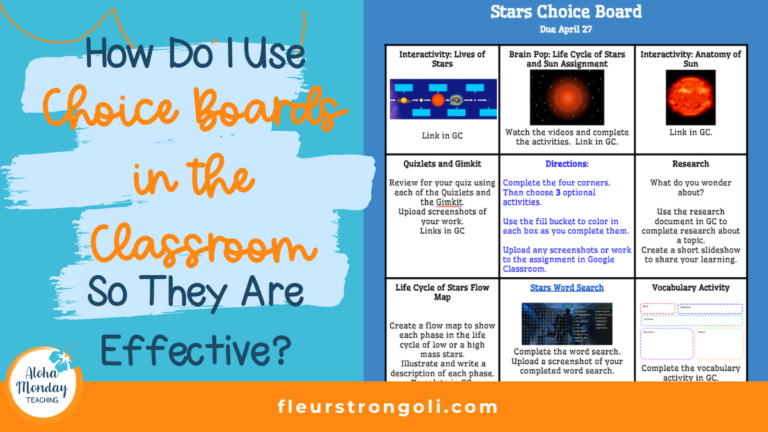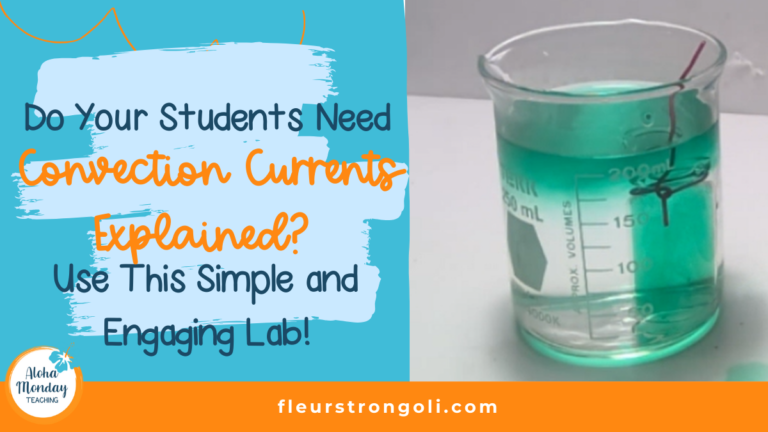How Do You Show Your Students Heat Transfer? With this Conduction Experiment!
What are some ways we can show heat transfer with a conduction experiment? There are different demos and labs we can do. In this conduction experiment, students will see which material makes the best conductor.
In this post
We will go over conduction, when we’d teach it, and when to use this lab. I will share the conduction experiment that I do with my students that is engaging and helps them understand conduction.
You can get the Conduction lab here.
Before you start planning, be sure to grab your free guide! Plan Your Science Unit in LESS Time with 3 Simple Steps!
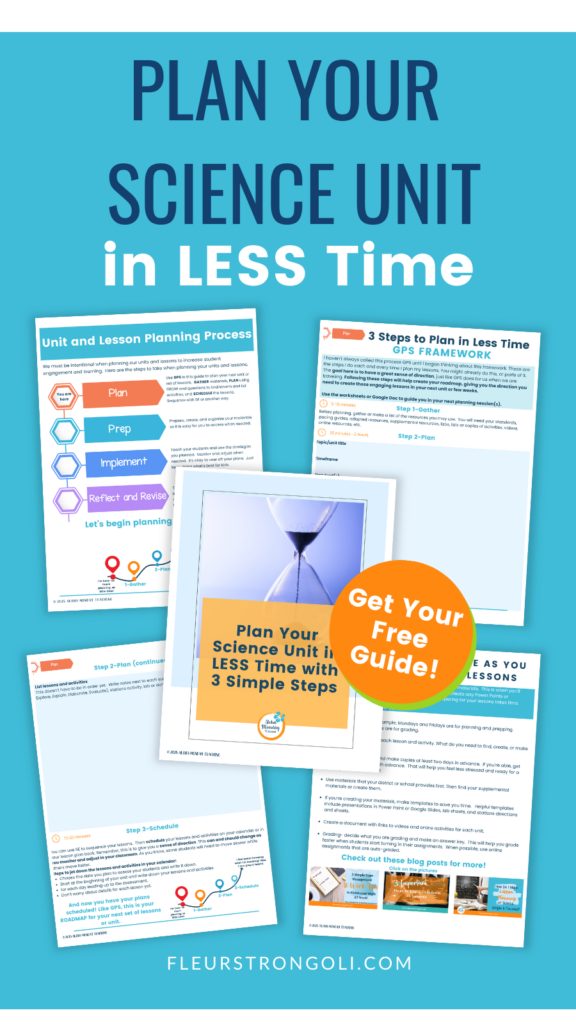
Disclosure: This post may contain some affiliate links for your convenience. As an Amazon Associate I earn from qualifying purchases with no cost to you.
When to teach conduction
Conduction can be taught at different times during science class. You might teach conduction during a thermal energy or heat transfer unit. I also teach this during a unit on energy transfer in Earth’s atmosphere and surface.
This is supported by this NGSS standard:
MS-PS3-3. Apply scientific principles to design, construct, and test a device that either minimizes or maximizes thermal energy transfer.
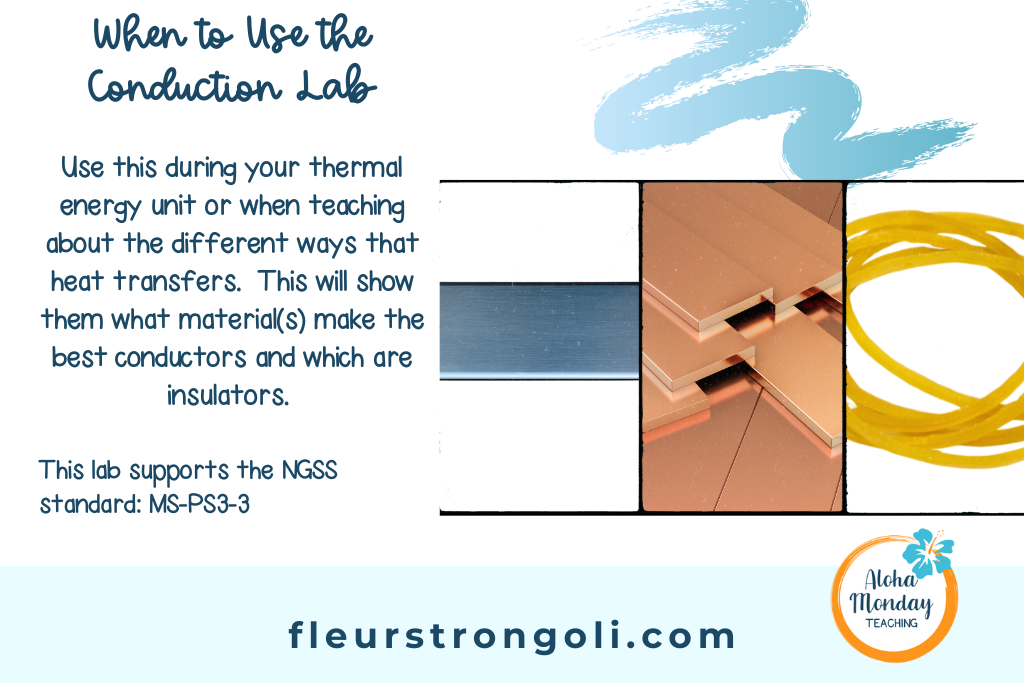
Conduction Lab
There are many conduction experiments you can do with your students. They can go outside on a warm day and observe the heat transfer around them. Radiation warms up the ground, and when they touch the ground, that warmth transfers to their hand. You can also buy hand warmers and demonstrate heat transfer by conduction.
The conduction experiment I use in my classroom is a simple one that uses basic materials you’ll have in your classroom or are easily obtainable. Students will see how heat transfers or doesn’t transfer through different materials. They will find the materials that are good conductors. They will discover or reinforce which materials are not good for transferring heat or are insulators.
Click here to get the conduction lab in my TpT store. You’ll get a Power Point, lab sheet, and a lesson plan.
Lab Materials
The lab materials you need include a beaker, hot water, 3 materials such as a popsicle stick, a plastic spoon, a metal spoon, and a copper strip. You can adjust it by using other strips of metal like brass or aluminum. You’ll also need shortening or butter.
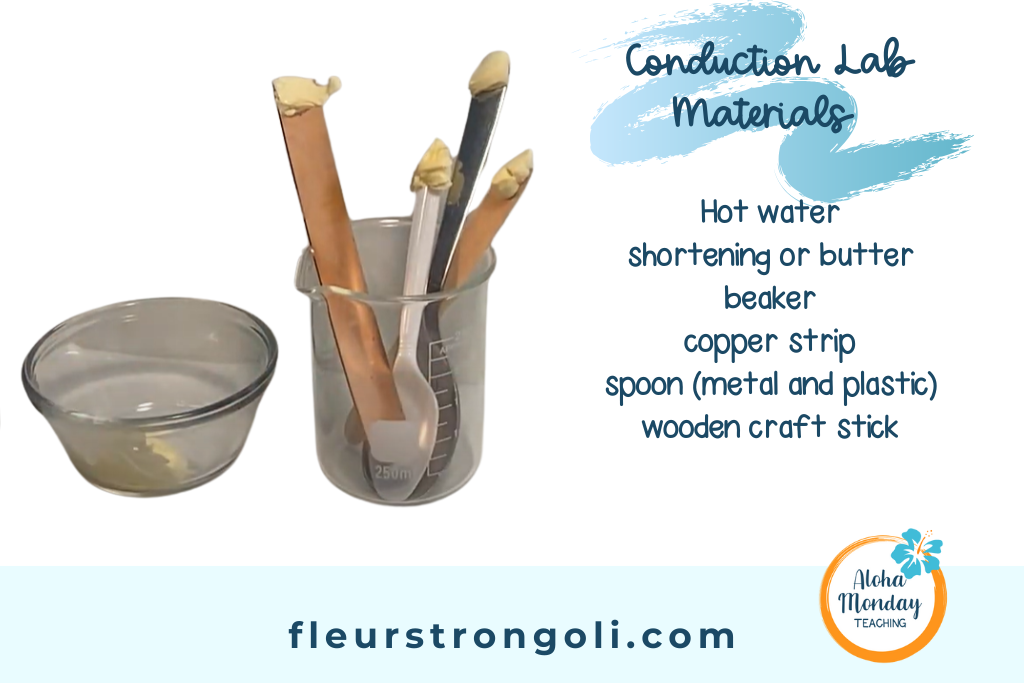
Lab Preparation
Before completing this lab with students, be sure to conduct it yourself. That way you can troubleshoot if the kids need it.
To prepare for this lab, you will heat some water. I use an electric kettle for this. On a tray, place a beaker and the materials. Put some shortening in a little cup.
Conducting the Lab with Students
I use a PowerPoint for each lab I do with students. This gives them a visual of each part of the lab along with directions for conducting the lab and cleaning up. Read more about managing labs in this blog post.
Students will follow the directions and put a small amount of shortening on the tips of each material. Then they will place it into the beaker with the shortening at the top. I come around with the hot water and fill it about halfway or less. You don’t need much. You can also have a cup of hot water ready so students can pour it in themselves. Then they observe and collect their data.
They should notice that the shortening almost immediately slides down the copper strip. This will show them that copper makes the best conductor.
Wrapping Up the Lab
When students are finished with the lab, it’s important for them to clean up and to analyze their results or data.
For this lab, I like to ask questions such as:
Was your hypothesis correct? Explain.
Explain how heat transferred to the shortening.
Which material makes the best conductor?
Which material(s) is/are conductor(s)/insulator(s)?
What is a conductor/insulator?
These questions can be part of the lab analysis and conclusion and/or as a class discussion.
Wrap Up
Teaching about conduction and heat transfer is fun! This lab will really help students understand how heat transfers by conduction through different materials. You can get the Conduction Lab in my TpT store.
Your Turn
What are ways you teach conduction and heat transfer? Is there anything new you will try? Reply and let me know!

Read More
What is a Science Lab and How Do I Manage It Effectively?
My Top 10 Science Experiments and Labs for Middle Schoolers This Year
3 Must-Dos to Run Your Science Lab Day with Science Lab Safety in Mind
Do Your Students Need Convection Currents Explained? Use This Simple and Engaging Lab!
What is the Must-Have List of Science Lab Equipment?





